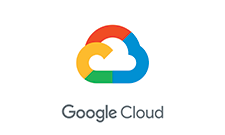Swinging for the Clouds: MLB Keeps Enhancing the Game and Fan Experience With Google Cloud
Cloud tools played a big role in helping the league adjust its rules for the first time in decades and then monitor the impacts
Story Highlights
This year wasn’t simply another season for Major League Baseball. The league began the 2023 season with three monumental new rule changes — quite possibly the biggest changes in the history of the game. The league added a pitch timer, increased the size of the bases, and limited defensive shifts. The intention of these rule changes was obvious: to increase action during the games. Google Cloud tools played a big role in helping the league adjust its rules for the first time in decades and then monitor the impacts.
 Pouring through reams of data at the end of the season, the results thus far are clear. Games have a quicker pace, shorter times, more stolen bases, and even more athleticism is now on display. The average nine-inning game is 24 minutes shorter, runners are stealing more bases successfully, and both batting average and runs per game have increased from last season.
Pouring through reams of data at the end of the season, the results thus far are clear. Games have a quicker pace, shorter times, more stolen bases, and even more athleticism is now on display. The average nine-inning game is 24 minutes shorter, runners are stealing more bases successfully, and both batting average and runs per game have increased from last season.
Baseball fans have always followed the numbers and been deeply engaged with the sport’s statistics, but now with these rule changes, that engagement with data seems to be at an all-time high.
Major League Baseball and Google Cloud have been technology partners going on four seasons now. Together, they’ve helped drive innovation in fan experiences, digital properties, security, and more.
The cloud has given baseball a platform on which to build new experiences for everyone involved. Yet exciting as these new digital and augmented experiences are — none can match the experience of more excitement on the field itself, which has become enhanced at all levels by data and analytics on the cloud. Speed is now the name of the game. And the cloud has become the fastest game in town.
CLICK HERE to read Google Cloud’s full blog post on how MLB leverages cloud-based tools to help adjust its rules and monitor the impacts.
